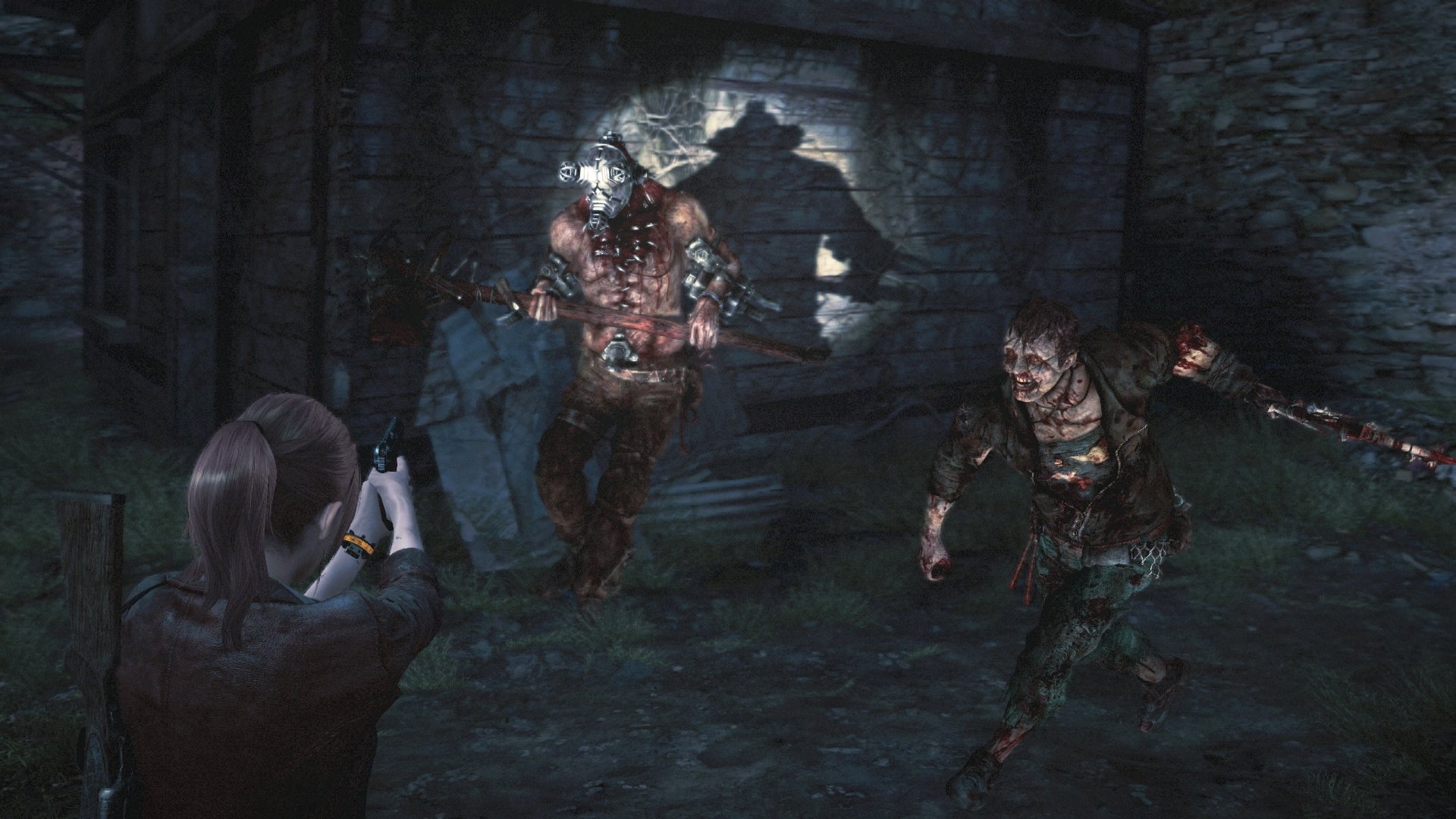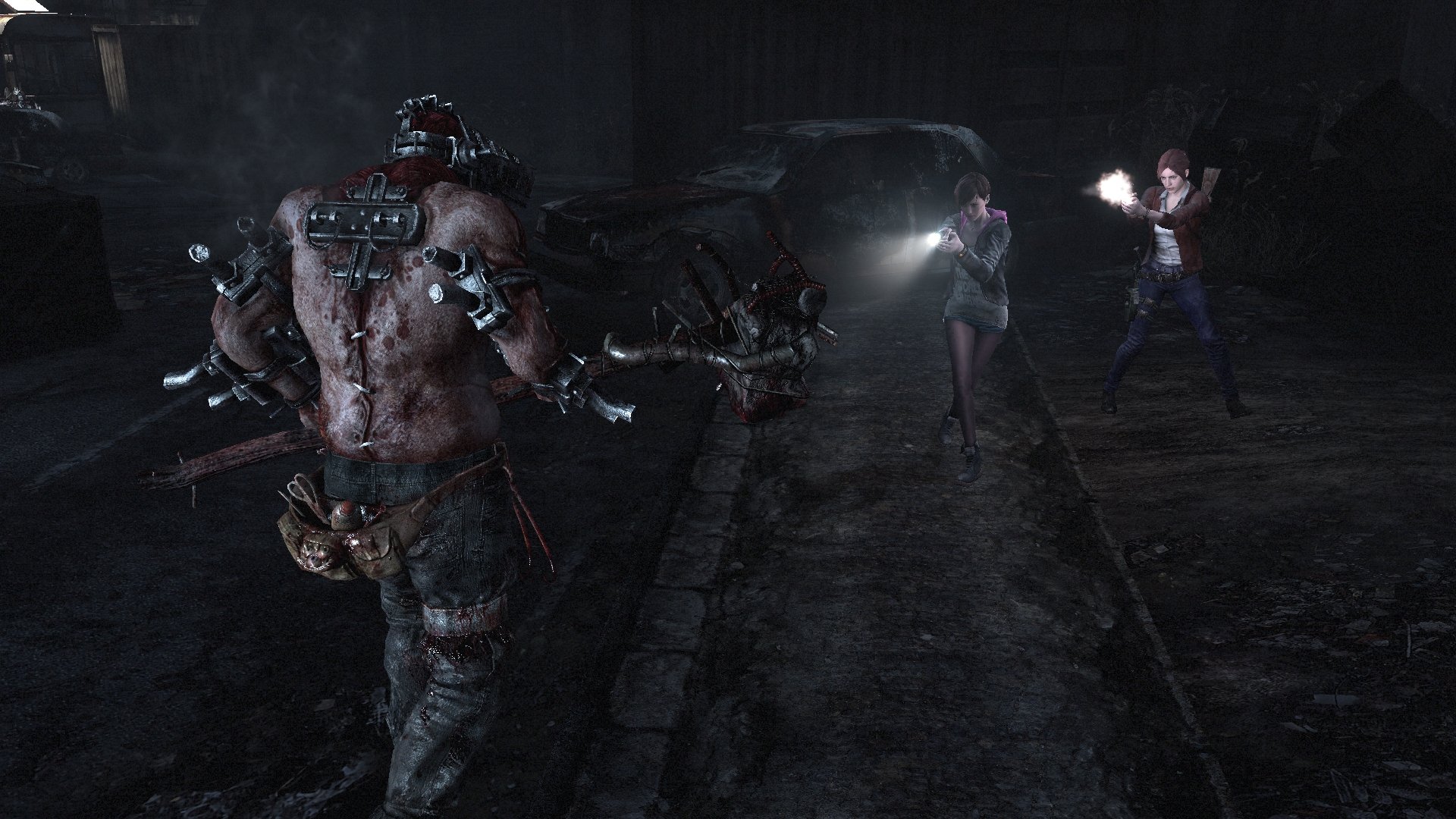Two chapters in, and so far Resident Evil Revelations 2 has been a thoroughly enjoyable episodic adventure. Even so, at times it feels like a series in the middle of an identity crisis: Capcom seemingly can’t quite decide whether its audience is in the mood for gung-ho action or would prefer the slower, more methodical approach of the series’ survival horror roots. It leads to a mild sense of unease during set-pieces where you’re encouraged to fire at will - after the previous hour has taught you to evade and stealth-knife enemies, to scavenge ammo rather than wasting it.
Raid mode has no such concerns, and little wonder: after all, enemies are far less scary when they’ve got purple health gauges over their heads and numbers flying out of their bodies as each round thuds home. Which isn’t to say that it lacks tension, of course. You’ll still get a shiver as you hear a guttural moan nearby and a zombie lunges forward as you round a blind corner. Or when a sprinter is racing your way as you frantically jam the final magnum bullet into the chamber, wondering whether you’ve got time to squeeze it off. Or when a lumbering monstrosity spawns behind you and you frantically waggle the left analogue to wriggle free from its sticky embrace before it chews your neck off.

It’s not entirely dissimilar to the celebrated Mercenaries mode of Resis 4, 5 and 6 in those respects, but that game was about learning stages by heart: through repeat plays you’d find the optimal route to maximise your combo, racing between spawn points and smashing crystals to beat your best score. Raid’s levels are more linear, though plenty varied in terms of layout and verticality. There’s an indoor facility with a tangle of walkways and purple energy barriers that can turn a route into a deadly cul-de-sac, while a walk in darkened woods can sometimes see creatures catching you unawares as they lurch out of the undergrowth. On the rare occasion you’re not tasked with simply routing all the enemies or reaching a goal before the clock runs down you might end up protecting crystals in a room with several entry points: you’ll hear nearby shrieks and shift the right analogue stick left and right anxiously, unsure from which direction they came. You’ll revisit the same areas as you progress through the stages, but there’s a new twist every time.
The focus, then, is on learning the monsters. Over time you’ll instinctively know which ones to prioritise, where best to stand, when best to reload or switch weapons. Meanwhile, the arrival of enemy Elites - generic nasties with buffs commonly indicated by an icon above their heads - forces you to adapt your tactics on the fly. Only by following the trail of toxic smoke will you discover the location of otherwise invisible foes, while those with a Ready Brek-style orange glow will burst into flame on death (as opposed to redecorating the room with powdered oatmeal). Over time, as you level up and begin to master stages, these become less of a threat and more of an opportunity for efficient kills: wait until a glowing white enemy is in the middle of a mob and you can freeze the entire group in one shot. The trade-off, of course, is that they seem a lot less frightening in the main game. “Ah, it’s those guys again.”

There are lots of subtly brilliant little design choices here. Before you enter the fray you’re invited to refill your ammo – thus avoiding starting a stage and quitting when you realise you forgot to restock - while high-level characters can temporarily lower their stats to earn the medal you get from defeating a mission at or below the recommended level (the only way you can earn all of that stage’s five rewards is by completing the objectives in a single attempt). And I love the room you find yourself in before and between Raids, with its peaceful music echoing the relaxing ambience of the classic Resi save room, the calm before the storm.
And there’s plenty to do while you’re enjoying a breather between runs. You’ll equip skills, buy and upgrade new weapons, slot in parts to boost their reload speed or have them fire electric rounds, and even combine parts to boost their effectiveness. In my game, Barry Burton is a not-so-lean mean killing machine wielding a handgun that empties its chamber within a couple of seconds, but which reloads quickly and carries plenty of reserve ammo.

And yet it’s not just the classic characters that get their time in the sun. Poor old Pedro didn’t last long in pre-mutant form, but here he can charge into enemies with his drill. The Ill-fated Gina, meanwhile, has become my new favourite, if only because she can kill enemies with gestures. You have to be brave to wave your hand in front of a zombie’s face to make it fall over, but it’s so fantastically daft that I immediately decided to invest all my skill points in it.
Weekly digests, tales from the communities you love, and more
Capcom’s obviously hoping the allure of the daily missions and the inherent appeal of the RPG-style levelling are what cajoles players into repeat plays. But for me it’s that wonderful, enduring silliness that’s keeping me hooked. For months, Destiny players have been banging on about the brilliance of Raids; now Resi fans can do likewise.
The official source for everything Xbox One, Xbox 360, and Xbox Series X. We're also a magazine, covering all things Xbox in the UK and the US. Originally established in 2001, the magazine was discontinued in April 2020.



